Last Updated on May 22, 2022
/usr
/usr is a place for system-wide, read-only files. A lot of your installed software is stored here, together with system libraries.
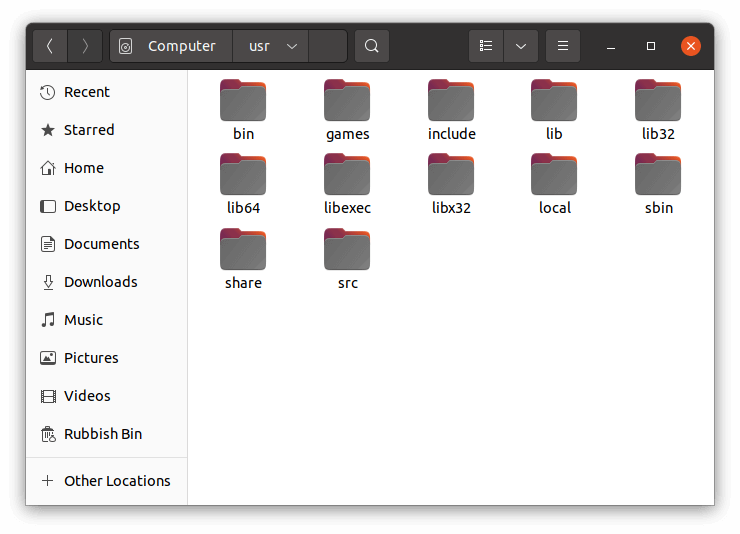
/bin
Historically, /bin contains executables which are required by the system for emergency repairs, booting, and single user mode. /usr/bin contains any binaries that aren’t required for these purposes.
In Ubuntu /bin is a symlink to /usr/bin. So the image below is really showing the files and folders stored in /usr/bin/.
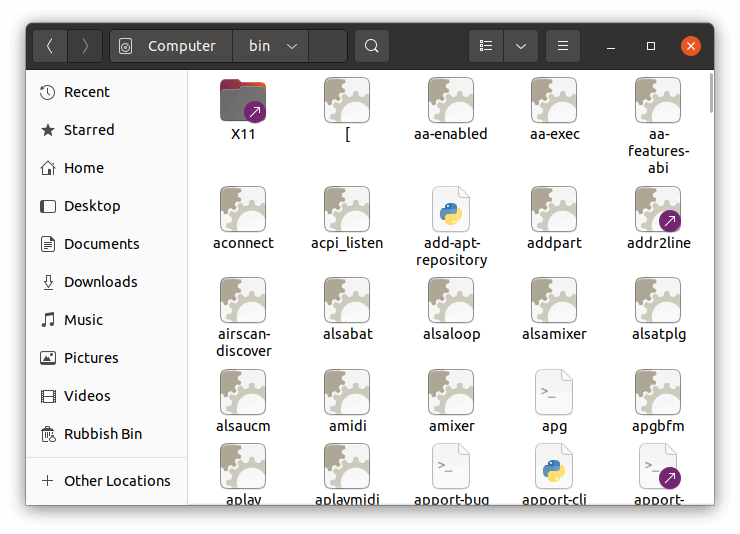
All this means is that commands that represent the bare minimum to run and maintain a system are lumped together in the same place as programs installed by you (and any other users on your system).
/sbin
Traditionally /sbin contains applications that only the superuser can execute; commands such as mount and fdisk. These applications can be used with the sudo command that temporarily allows a regular user superuser powers.
On Ubuntu 21.04 /sbin is a symlink to /usr/sbin.
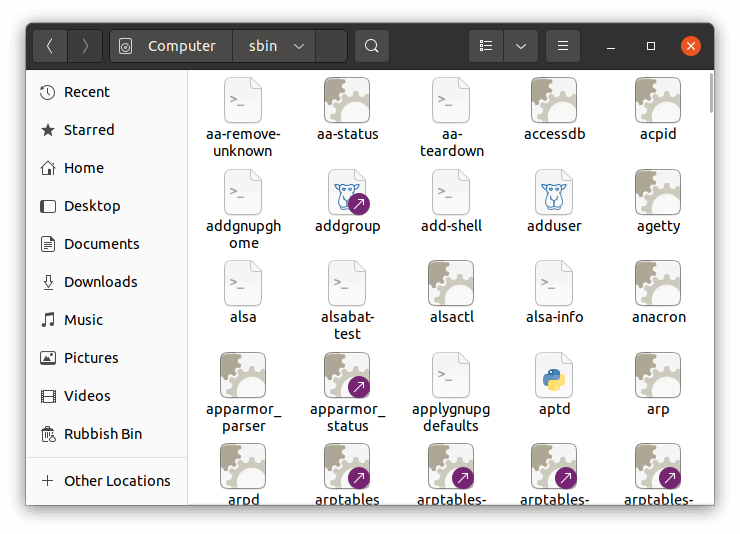
/snap
The /snap directory is, by default, where the files and folders from installed snap packages appear on your system.
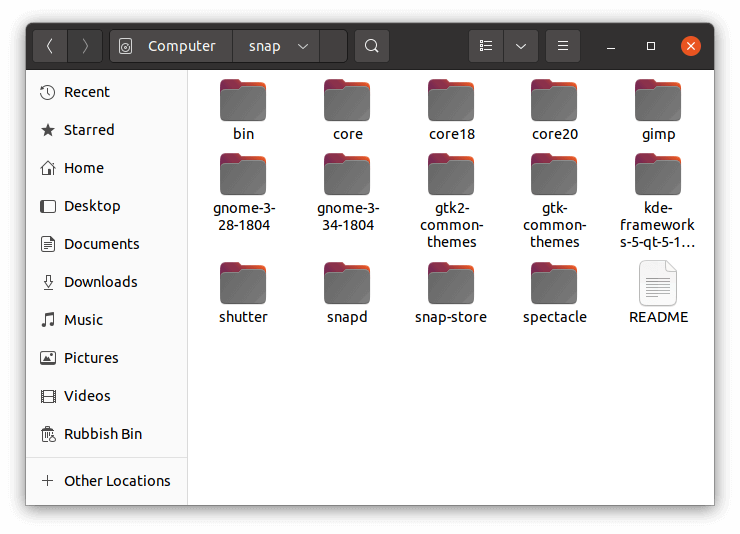
These files and folders are mounted from the heavily compressed data that’s stored within the original snap, located in/var/lib/snapd/snaps.
/boot
The /boot directory contains the files needed to allow Ubuntu to boot. You want to keep clear of this directory. It’s only accessible with superuser privileges so don’t worry about accidentally damaging your system.
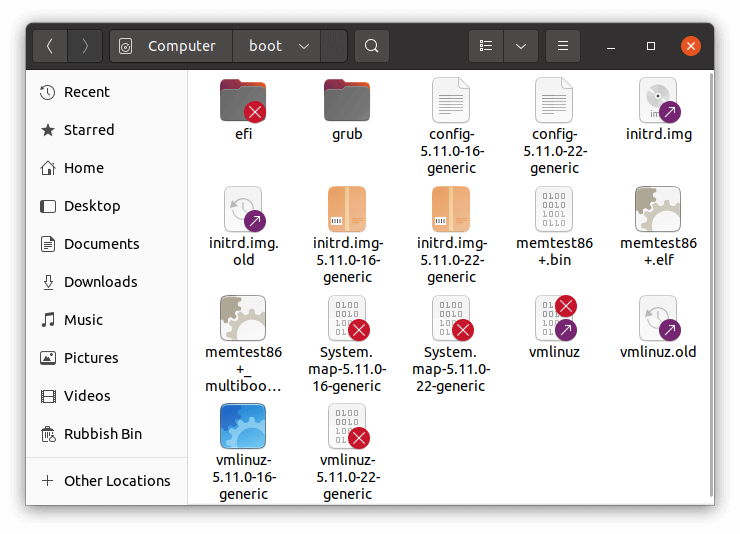
The vmlinuz is the name of the Linux kernel executable. vmlinuz is a compressed Linux kernel, and it’s capable of loading the operating system into memory so that the computer becomes usable and application programs can be run.
/etc
/etc holds the configuration files unique to the system although not all system-wide configuration files reside here. Nevertheless, it’s sometimes regarded as the nerve centre of Ubuntu, where the control and operation of all processes is held.
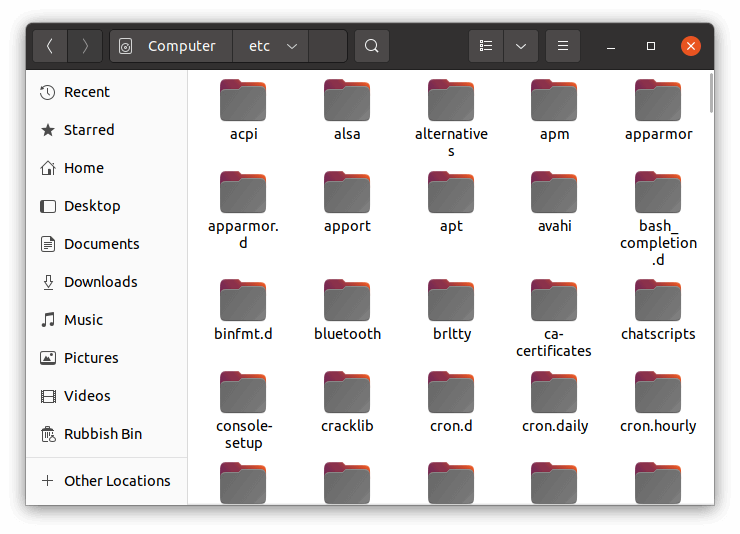
It’s best not to tinker with files in /etc until you’ve mastered the basics.
Page 3 – /dev, /lib, /tmp, /var, and other locations
Pages in this article:
Page 1 – / and /home
Page 2 – /usr, /bin, /sbin, /snap, /boot, and /etc
Page 3 – /dev, /lib, /tmp, /var, and other locations
All articles in this series:

Thanks. This is a pretty good explanation of the basics of the file system. It’s definitely one of the hardest areas to get your head round coming from a purely Windows background.
Yes, a good intro I think. Maybe you could do a more detailed walktrough?